30 Authentic Spanish Fish Dishes for Your Next Feast
Spanish fish dishes represent a vibrant culinary tradition deeply rooted in coastal communities and Mediterranean influences.
Seafood plays a central role in spanish gastronomy, reflecting the country's extensive maritime heritage.
Coastal regions boast rich, flavorful preparations that transform ocean-fresh catches into extraordinary meals.
Skilled chefs blend local ingredients, traditional techniques, and regional spices to create memorable seafood experiences.
These dishes showcase Spain's remarkable ability to honor marine resources through innovative cooking methods.
Regional variations highlight distinctive cooking styles, from delicate marinades to robust, hearty preparations.
The passion for seafood runs deep in spanish culinary culture, connecting generations through remarkable flavor combinations.
Dive into these 30 signature spanish fish dishes that will tantalize your taste buds:
Signature Spanish Fish Dishes for Seafood Fans
Fish is a staple in Spanish cuisine, and each region brings its own flair. Expect everything from vibrant tomato-based stews to delicate fillets grilled with a drizzle of olive oil and herbs.
Kokotxas
Kokotxas are succulent gelatinous fish cheek delicacies prized in Basque cuisine for their unique texture and rich flavor.
Spanish fishermen traditionally harvest these delicate morsels from hake or cod, carefully removing the lower chin area with expert precision.
Basque chefs prepare kokotxas through two primary methods: a classic white wine sauce featuring garlic, flour, and olive oil or the more traditional salsa verde with chopped parsley and fish stock.
Small clay casserole pots serve as the preferred cooking vessel, allowing the kokotxas to be lightly fried and then gently bathed in their aromatic sauce.
Crusty bread accompanies the dish, perfect for soaking up every last drop of the flavorful liquid.
Mediterranean fishing communities have long celebrated these tender fish morsels as a delicacy.
Espetos
Espetos are grilled sardines skewered and cooked over open olive wood flames, originating in Malaga's coastal fishing communities during the late 19th century.
Spanish fishermen first developed this technique to preserve surplus catch by roasting sardines directly on beaches using simple boat-based equipment.
Seasonal sardines between May and August offer optimal flavor due to higher fat content, creating a rich maritime culinary experience.
Skilled restaurant workers traditionally grill six sardines per metal skewer, seasoning them with sea salt for enhanced taste.
Mediterranean cooking techniques transform these simple fish into a beloved Spanish beach delicacy.
Olive oil and fresh lemon juice complete the final preparation, adding brightness to the charred seafood.
Beach bars throughout Malaga serve espetos alongside refreshing beverages like sangria, beer, and red wine.
Regional tradition and simple ingredients make espetos a genuine representation of coastal Spanish gastronomy.
Croquetas De Bacalao
Croquetas de bacalao are golden-brown Spanish fritters packed with savory salt cod flavor and beloved across Spain's culinary landscape.
Spanish kitchens transform salted cod into a creamy, smooth mixture by blending flaked fish with either béchamel sauce or mashed potatoes.
Skilled home cooks carefully shape the mixture into small oblong or round forms after thoroughly seasoning the base ingredients.
Breadcrumbs provide a crisp exterior that contrasts beautifully with the soft, rich interior of these traditional tapas.
Each croqueta delivers a perfect balance of textures and maritime flavors that reflect Spain's coastal cooking traditions.
Generations have enjoyed these bite-sized treats as appetizers or light meals.
Grilled Sardines (Sardinas A La Parrilla)
Grilled sardines epitomize Mediterranean summer seafood, transforming fresh fish into a simple yet flavorful delicacy.
Mediterranean coastal regions celebrate these small fish as a seasonal specialty, grilling them over charcoal to enhance their natural taste.
Olive oil, lemon juice, salt, and black pepper create a classic marinade that amplifies sardines' delicate flavor profile.
Chefs quickly grill the fish, ensuring a crispy exterior while maintaining a tender interior.
Summer months provide the best sardine harvests, making this dish particularly popular among coastal communities.
Light, sweet white wines perfectly complement the grilled sardines' robust flavor.
Bacalao Al Pil-Pil
Bacalao al pil-pil embodies Basque coastal cuisine through its elegant simplification of salt cod preparation, transforming four humble ingredients into a silky emulsified masterpiece.
Spanish fishermen developed this technique centuries ago to preserve and enhance cod's delicate flavor using minimal components like olive oil, garlic, and chili peppers.
Kitchen masters carefully cook the fish in olive oil, coaxing natural gelatin from cod to create a rich, creamy sauce through slow, precise movements.
Gentle swirling and tilting of the pan allows the sauce to develop its signature smooth texture without breaking.
Mediterranean culinary traditions shine through this method, which requires patient technique and understanding of ingredient interactions.
Salt cod absorbs flavors while releasing proteins that thicken the sauce naturally during cooking.
Each movement determines sauce consistency, making the dish a test of cooking skill.
Served hot with scattered garlic and pepper fragments, bacalao al pil-pil represents northern Spanish seafood expertise.
Marmitako
Marmitako stands as a hearty Basque seafood stew originating from Spanish fishing boats, traditionally prepared with fresh tuna, potatoes, tomatoes, onions, and chili peppers.
Fishermen created this robust meal during long maritime journeys, using ingredients easily stored onboard their vessels.
Basque sailors would cook the stew directly in a large pot called a marmita, which inspired the dish's name meaning "from the pot".
Spanish coastal communities continue preparing marmitako as a classic comfort food reflecting maritime culinary traditions.
Fishermen's practical cooking methods transformed simple ingredients into a satisfying meal that warmed and nourished seafaring workers.
Modern restaurants and home cooks across Spain still celebrate this rustic, flavorful stew.
Each serving represents generations of maritime cooking expertise passed through Basque culinary history.
Bacalao A La Vizcaina
Bacalao a la Vizcaina represents Spain's rich maritime culinary heritage, featuring salt cod transformed by a robust Basque sauce bursting with complex flavors.
Spanish sailors and coastal communities perfected this iconic dish using preserved cod, red onions, garlic, and traditional choricero pepper puree.
Fishermen developed this recipe as a practical method to enjoy protein during long voyages when fresh ingredients were scarce.
Mediterranean kitchens often include tomatoes in the sauce for additional depth and richness.
Home cooks carefully desalt the cod before gently cooking it in the aromatic sauce.
Generations have passed down this technique through family recipes and regional cooking traditions.
Warm serving temperatures enhance the sauce's intense flavors and create a comforting dining experience.
Fried Cod In Tomato Sauce (Bacalao Frito Con Tomate)
Bacalao frito con tomate represents Spain's maritime culinary heritage, transforming dried salt cod into a crispy, flavorful masterpiece.
Fishermen along Mediterranean coastlines perfected this rustic dish by carefully frying cod pieces coated in flour until golden brown and crunchy.
Spanish home kitchens prepare this recipe by first soaking salt cod overnight to remove excess salt and tenderize the fish.
Olive oil becomes the essential cooking medium, creating a rich base for sautéing chopped onions and garlic until soft and fragrant.
Ripe tomatoes and roasted bell peppers join the pan, adding depth and complexity to the simple yet elegant meal.
Aromatic bay leaves infuse additional flavor throughout the cooking process.
Spanish families typically serve this dish with crusty bread for soaking up the savory sauce.
Mediterranean cooking traditions shine through in this straightforward, rustic preparation that celebrates fresh ingredients and simple techniques.
Rodaballo A La Gallega
Rodaballo a la gallega showcases Galician seafood mastery through its succulent turbot preparation that transforms fresh fish into a spectacular maritime feast.
Spanish coastal kitchens traditionally boil tender turbot with potatoes, carrots, and leeks until perfectly cooked and flavorful.
Chefs carefully slice the fish lengthwise and artfully arrange it alongside boiled vegetables on serving plates.
Robust garlic-infused olive oil sauce adds intense regional character to each bite.
Pimenton and bay leaves contribute complex spice notes that complement the delicate fish.
White wine infuses additional depth into the cooking liquid during preparation.
Lemon juice provides bright, zesty undertones that enhance the seafood's natural flavors.
Mediterranean ingredients blend harmoniously to create this authentic Galician culinary treasure.
Angulas
Angulas are prized Spanish baby eels considered Northern Spain's culinary treasure, commanding astronomical prices up to 1,000 euros per kilogram despite their subtle flavor.
Originally slimy and transparent, these delicate creatures transform into opaque-white strands when cooked, presenting a unique textural experience.
Bilbao's traditional preparation method involves frying hot peppers and garlic in olive oil before introducing the baby eels to the sizzling mixture.
Seafood enthusiasts value angulas for their delicate, meaty consistency and rare status as a luxury ingredient.
Spanish gastronomy elevates these tiny eels from simple marine creatures to an extraordinary delicacy.
Restaurants and high-end establishments often feature angulas as a premium menu item.
Boquerones Fritos
Boquerones fritos are crispy, golden-brown anchovies expertly deep-fried to perfection in Andalusia, Spain's southern coastal region.
Spanish fishermen traditionally prepare these salty seafood bites using fresh anchovies coated in light flour and quickly fried in olive oil.
Mediterranean coastal communities celebrate this simple yet flavorful dish as a popular tapas selection served in bars and restaurants.
Home cooks and restaurant chefs carefully clean the anchovies before seasoning them with salt and lightly dusting them in flour.
Small fish transform into crunchy, irresistible morsels when submerged in hot olive oil for just a few minutes.
Spanish families often enjoy boquerones fritos as a quick appetizer or light meal paired with cold beer or white wine.
Crispy edges and tender fish interiors make these anchovies a beloved Spanish street food.
Malaga Fish Fry (Fritura Malaguena)
Fritura Malaguena represents a classic Andalusian seafood feast from Spain featuring an array of small, boneless marine delicacies.
Coastal chefs expertly coat tiny fish, shellfish, and crustaceans in flour before deep-frying them in extra-virgin olive oil until golden and crispy.
Signature ingredients like baby squid, red mullet, mackerel, prawns, cuttlefish, and anchovies create a rich maritime medley.
Salt and lemon juice enhance the seafood's natural flavors, while roasted pepper salad provides a complementary side.
Regional traditions dictate using small, bone-free seafood for easy eating and maximum taste.
Mediterranean cooking techniques transform simple ingredients into a remarkable street food experience.
Spanish coastal communities have perfected this quick, flavorful dish over generations.
Anchovies In Vinaigrette (Bocartes En Cazuela)
Bocartes en cazuela embodies Basque coastal cuisine through its simple yet intense seafood preparation featuring fresh anchovies transformed by bold Mediterranean flavors.
Fishermen traditionally prepared this dish using locally caught anchovies straight from northern Spanish waters.
Garlic and red pepper flakes infuse the fish with deep, spicy undertones while olive oil creates a rich cooking base.
Red wine vinegar adds sharp, tangy notes that complement the anchovies' natural saltiness.
Cooking happens quickly in a cazuela (traditional clay pot), where anchovies are first rinsed and seasoned with salt and spices.
Each anchovy gets briefly fried to achieve a crispy exterior while maintaining its delicate inner texture.
Albondigas De Bacalao
Albondigas de bacalao are savory Spanish cod meatballs originating from Aragon, blending rustic maritime flavors with simple ingredients.
Mediterranean fishermen crafted these hearty bites as a resourceful way to use preserved cod and pantry staples.
Potatoes boiled with their skins provide a creamy base for mixing with flaked cod, creating a rich texture.
Garlic, parsley, and eggs bind the mixture, adding depth and complexity to each morsel.
Chefs shape the blend into small, compact spheres before carefully frying them to golden perfection.
Salt cod's distinct flavor infuses these meatballs with an authentic maritime essence.
Tomatoes often accompany the dish, offering a bright, tangy counterpoint to the fish.
Served as tapas or a main course, albondigas de bacalao represent a classic example of Spanish coastal cuisine's ingenious cooking traditions.
Gazpachuelo
Gazpachuelo is a rustic Spanish seafood soup from Malaga that started as a humble fisherman's meal packed with oceanic flavors.
Fishermen originally crafted this hearty soup using simple ingredients like fish, potatoes, and fish stock.
Wine vinegar and egg yolks create a rich, creamy base that distinguishes the dish from other regional soups.
Garlic adds depth to the broth, while mayonnaise smooths its texture and enhances its complexity.
Shrimp and clams became popular additions over time, transforming the basic recipe into a more luxurious dish.
Mediterranean ingredients reflect the coastal origins of this traditional soup.
Southern Spanish coastal communities continue to prepare gazpachuelo as a comforting winter meal.
Ajoarriero
Ajoarriero is a rustic Basque and Navarran salt cod specialty featuring shredded fish transformed by a vibrant medley of vegetables and bold seasonings.
Fishermen originally prepared this hearty dish in clay pots over open fires, creating a communal cooking experience that celebrated regional ingredients.
Chopped tomatoes, garlic, onions, red and green peppers, and potatoes meld together to create a rich, complex flavor profile that highlights the preserved fish.
Salt cod provides a robust protein base that absorbs the aromatic vegetable mixture.
Garlic quantities traditionally varied based on the number of diners, adding a personalized touch to the preparation.
Mediterranean culinary traditions deeply influence this one-pot meal, reflecting the resourcefulness of coastal communities.
Traditional recipes often include hot peppers for an extra kick of heat.
Family gatherings and rural celebrations frequently feature ajoarriero as a satisfying and flavorful main course.
Merluza A La Gallega
Merluza a la gallega exemplifies Galician seafood cuisine through its simple yet flavorful preparation of hake fish simmered with potatoes.
Spanish coastal regions celebrate this classic dish featuring tender hake as its centerpiece.
Fishermen traditionally prepare merluza by boiling hake pieces with sliced potatoes in salted water.
Garlic, paprika, bay leaves, and olive oil provide robust Mediterranean seasonings.
Onions contribute additional depth to the fish's mild flavor profile.
Regional cooking methods ensure each ingredient maintains its natural essence.
Galician kitchens serve merluza a la gallega as a comforting meal reflecting coastal culinary traditions.
Mojama
Mojama is a prized Spanish delicacy of salt-cured and wind-dried tuna fillets that transform raw fish into an intensely concentrated seafood experience.
Mediterranean fishermen developed this preservation technique centuries ago to extend tuna's storage life in coastal regions of southern Spain.
Fishermen carefully salt and dry bluefin tuna strips under controlled conditions for several weeks until they become dark reddish-brown and significantly shrink in size.
Traditional preparation involves hanging tuna fillets in well-ventilated spaces where sea breezes naturally dehydrate the meat.
Spanish tapas bars often serve thin mojama slices drizzled with olive oil as an appetizer or accompaniment to bread and olives.
Authentic mojama requires minimal seasoning to highlight its rich, complex umami flavor profile.
Connoisseurs consider this delicacy a testament to Spain's innovative seafood preservation methods.
All I Pebre
All i pebre is a bold Valencian fish stew highlighting the region's culinary heritage through its robust garlic and pepper sauce.
Originating in Albufera's wetlands, this traditional dish traditionally features fresh eel simmered in a spicy, aromatic base.
Local fishermen developed the recipe using ingredients readily available in their coastal environment.
Garlic, paprika, olive oil, and red pepper create the signature sauce's intense flavor profile.
Potatoes or bread frequently accompany the tender fish, absorbing the rich sauce's complexity.
Mediterranean ingredients and simple preparation methods define this rustic Spanish specialty.
Valencia's gastronomic culture shines through this straightforward yet powerful dish that connects generations through its authentic taste.
Bacalla A La Llauna
Bacalla a la llauna is a classic Barcelonan seafood specialty featuring salt cod transformed into a crispy, golden delicacy through careful preparation.
Mediterranean fishermen pioneered this 19th-century dish by desalting and frying cod fillets in olive oil until perfectly golden and delicate.
Skilled home cooks dredge the fish in flour before frying, creating a light, crisp exterior that locks in maritime flavors.
Garlic and pimenton sizzle in the same olive oil, infusing the dish with rich, aromatic depth.
Spanish kitchens traditionally serve the fish in a llauna, a rectangular low-sided pan that helps concentrate flavors.
Olive oil plays a critical role, acting as both cooking medium and flavor enhancer for the salt cod.
Simple ingredients like parsley add fresh, green notes to balance the fish's richness.
Atun Mechado
Atun mechado are succulent tuna fillets stuffed with bacon and garlic, creating a rich Spanish seafood specialty from Malaga.
Cooks slice the tuna and carefully insert crispy bacon and fragrant garlic pieces into strategic cuts along the fish.
Peppercorns crushed and rolled onto the bacon add an extra layer of robust flavor.
Chefs dust the fish with flour and brown it carefully in olive oil, developing a golden exterior.
Onions and carrots sauté alongside additional garlic, softening and releasing sweet undertones.
White wine or sherry joins bay leaves and cloves to deepen the dish's complexity.
Cooking continues in a casserole, allowing ingredients to meld together harmoniously.
Diners enjoy this traditional preparation as a testament to Andalusian coastal culinary traditions.
Tajada De Bacalao
Tajada de bacalao sparks culinary excitement with its succulent Spanish cod preparation that celebrates Mediterranean seafood traditions.
Mediterranean fishermen originally crafted this dish as a hearty meal using salted cod preserved for long sea journeys.
Spanish regions like Galicia and Basque Country developed unique preparation methods involving frying, baking, or poaching cod slices.
Traditional accompaniments often feature garlic, olive oil, parsley, and sometimes potatoes or peppers.
Spanish home cooks typically serve tajada de bacalao as a main course during religious festivals or family gatherings.
Salt preservation techniques dating back centuries allowed fishermen to transport cod across long distances without spoilage.
Mediterranean culinary experts consider this dish a testament to Spain's rich maritime cooking heritage.
Sancocho Canario
Sancocho canario is a hearty seafood stew from Canary Islands showcasing regional maritime culinary traditions with salted fish like cherne, stoker, or sea bass simmered alongside potatoes and sweet potatoes.
Fishermen and home cooks craft this rustic dish by desalting and cutting fish into pieces before gently boiling them with root vegetables.
Olive oil enhances the rich flavors of the fish-based meal, which transforms simple ingredients into a comforting island specialty.
Gofio flour mixed with water and salt provides a traditional accompaniment, adding texture and depth to the plate.
Mojo rojo sauce delivers a spicy red pepper complement that elevates each bite of tender fish and soft potatoes.
Coastal communities have perfected this recipe over generations, passing down techniques for preparing perfectly balanced seafood.
Chopped parsley sprinkled on top adds a fresh, bright garnish that lightens the dense protein-rich stew.
Pescado Seco
Pescado seco represents a traditional Canary Islands fish preservation technique born from generations of maritime expertise and natural necessity.
Fishermen transform fresh catch through an ancient sun-drying method that concentrates flavors and extends food storage capabilities.
Small fish like parrotfish or wreckfish undergo careful cleaning and salting before exposure to intense island sunlight for approximately four days.
Sea winds and warm temperatures naturally dehydrate the fish, creating a concentrated protein source with intense maritime flavor.
Salt acts as a natural preservative, drawing moisture from fish flesh and preventing bacterial growth.
Each piece develops a firm texture and deep, complex taste profile distinctive to Canary Islands culinary traditions.
Pescado seco served as a crucial survival technique before refrigeration, ensuring protein availability during lean periods.
Island communities perfected this technique over centuries, turning simple preservation into a refined gastronomic practice.
Truchas A La Navarra
Truchas a la Navarra are succulent trout fillets from Spain's Navarre region prepared with a crispy exterior and delicate meat.
Spanish cooks transform fresh river trout by coating them in flour and quickly frying in olive oil until golden brown.
Thin slices of salty jamon serrano crown each fish, adding rich umami flavor to the simple preparation.
Regional chefs typically garnish the fish with fresh parsley and a squeeze of bright lemon juice.
Salt seasons the fish before cooking, creating a balanced taste profile.
Traditional preparation involves carefully dredging trout in flour to ensure a perfectly crisp exterior.
Olive oil provides the perfect medium for achieving a quick, even fry.
Navarre's rivers supply the primary ingredient, making this dish a true reflection of local culinary traditions.
Salt Cod With Potatoes And Onions (Boyitori)
Boyitori represents a classic Valencian salt cod specialty characterized by its simple yet flavorful preparation of layered ingredients.
Spanish home kitchens transform salt cod into a rustic comfort meal combining tender potatoes and caramelized onions.
Fishermen along Mediterranean coastal regions traditionally prepared this dish using freshly caught cod and locally grown vegetables.
Mediterranean olive oil provides rich depth and smooth texture to the ingredient blend.
Salt cod gets softened and sautéed with onion quarters in a hot pan until golden brown.
Parsley adds fresh herbal notes to the final presentation.
Potatoes are cut into hearty chunks and cooked until crispy edges develop.
Regional Valencian families have enjoyed this economical and satisfying seafood recipe for generations.
Salmon Poached In Cider (Salmon En Sidra)
Salmon en sidra originates from Spain's Asturias region as a distinctive seafood preparation featuring salmon poached in hard apple cider.
Regional fishermen crafted this simple yet flavorful dish using fresh local salmon and abundant regional cider.
Cooks first season salmon fillets with salt and lightly coat them in flour before searing in olive oil.
Hard apple cider serves as a unique poaching liquid, infusing the fish with subtle sweet and tangy notes.
Quick searing creates a golden exterior while keeping the salmon's interior moist and tender.
Traditional preparation involves gently simmering the fish in cider until perfectly cooked.
Asturian cuisine celebrates this method as a signature technique for preparing fresh seafood.
Rape Con Azafran
Rape con azafran embodies Spanish coastal cuisine through its simple yet sophisticated Mediterranean seafood preparation highlighting monkfish's tender white flesh enhanced by fragrant saffron.
Spanish fishermen traditionally prepare this classic dish by coating fresh monkfish in seasoned flour and carefully frying it in olive oil until golden brown.
Saffron's distinctive yellow-orange color transforms the fish's appearance with its rich, earthy flavor profile.
Olive oil provides a smooth cooking medium that complements the fish's delicate texture.
Home cooks often serve rape con azafran with crusty bread or white rice to absorb the flavorful pan juices.
Mediterranean ingredients like fresh herbs or lemon wedges can garnish the plate for additional brightness.
Caldillo De Perro
Caldillo de perro stands as a rustic Andalusian seafood soup with an intriguing name meaning "dog soup" despite containing no canine ingredients.
Spanish fishermen from El Puerto de Santa Maria crafted this simple maritime dish using fresh hake as its primary protein.
Olive oil serves as the foundational cooking medium where garlic gets briefly fried and removed, leaving behind a deeply flavored base.
Onions transform in the same fragrant oil before water joins to create a delicate broth.
Hake pieces simmer gently in the liquid, absorbing surrounding flavors and textures.
Seville oranges add a sharp citrus note near the end of cooking, brightening the entire preparation.
Stale bread crumbles into the soup, providing thickness and subtle earthiness.
Traditional presentation happens in classic earthenware cazuela de barro bowls, maintaining the recipe's authentic coastal spirit.
Besugo A La Madrilena
Besugo a la madrilena represents a classic Spanish seafood specialty showcasing Madrid's culinary heritage with sea bream as its star ingredient.
Mediterranean fishermen traditionally prepare this dish by baking whole sea bream seasoned with fragrant garlic and olive oil.
Spanish kitchens carefully layer potatoes and scallions underneath the fish for added flavor and texture.
Breadcrumbs create a crispy exterior that complements the tender white fish meat.
Fresh parsley and lemon juice provide bright, zesty notes that enhance the seafood's natural taste.
Red or white wine serves as a traditional cooking liquid that adds depth to the overall preparation.
Home cooks and restaurants across Madrid serve this dish during special occasions and winter celebrations.
Spanish families enjoy besugo a la madrilena as a treasured regional recipe that connects generations through shared meals.
Why Is Grilled Fish So Popular in the Mediterranean Regions of Spain?
Grilled fish is a staple in Spain’s Mediterranean coastal regions due to its simplicity and ability to highlight the fresh, natural flavors of local seafood.
The warm climate and proximity to the sea mean that fish is abundant and of high quality. Grilling allows the fish’s delicate texture and subtle sweetness to shine without being overpowered by heavy sauces or complex preparations.
Olive oil, sea salt, and a squeeze of fresh lemon often accompany the dish, enhancing its natural taste while keeping it light and healthy.
This method also fits perfectly with the Mediterranean diet’s emphasis on fresh, wholesome ingredients.
Do Fish and Rice Always Go Together in Spanish Recipes?
While fish and rice are a classic pairing in many Spanish dishes, especially in iconic recipes like paella and arroz caldoso, they don’t always have to be served together.
In coastal Spain, rice often acts as a hearty base that complements seafood’s flavors, but grilled or fried fish dishes might be enjoyed on their own or paired with vegetables, salads, or potatoes instead.
The combination is popular but not mandatory, reflecting the diverse culinary traditions across Spain.

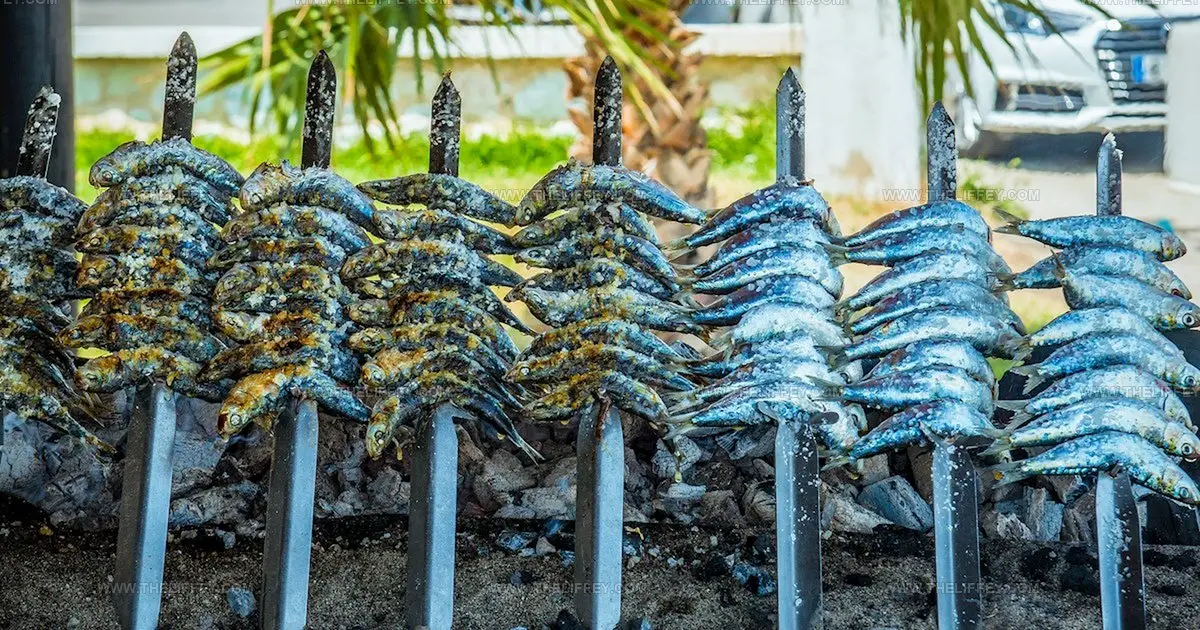
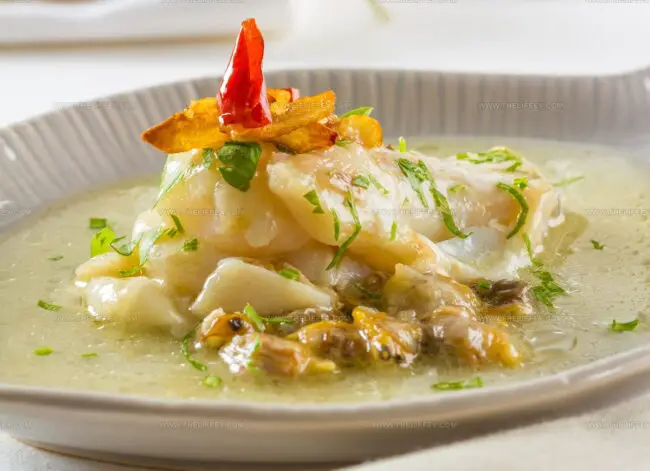
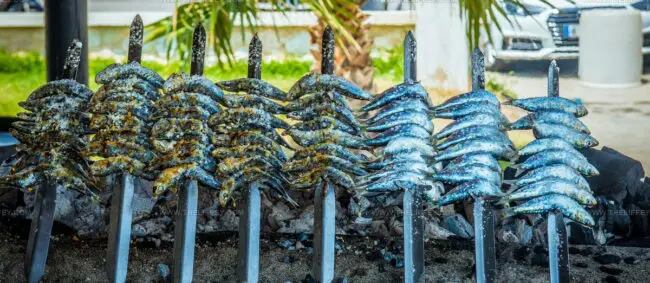
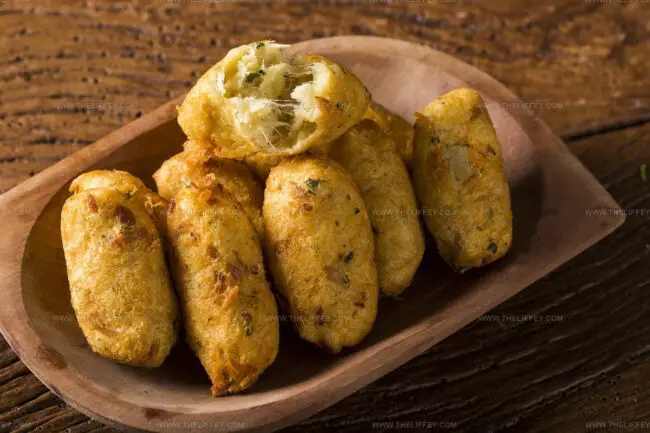
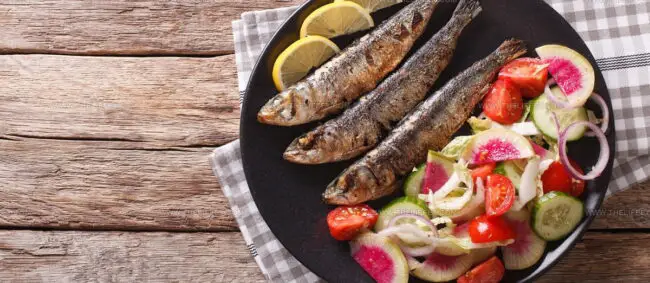
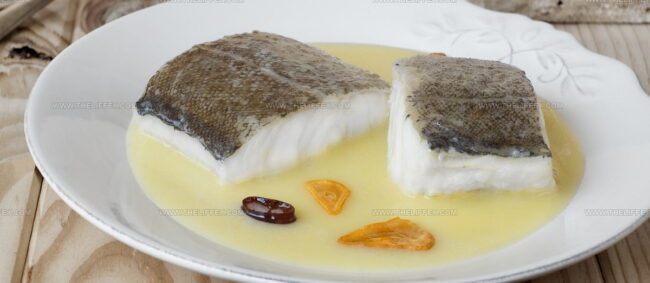
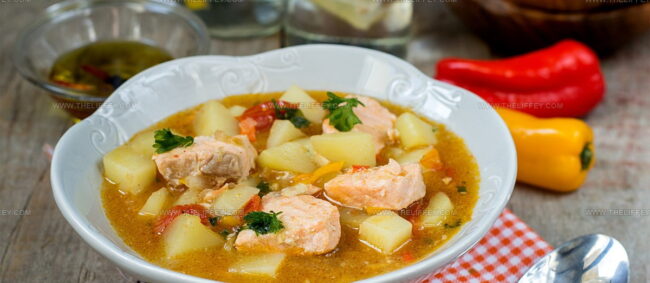
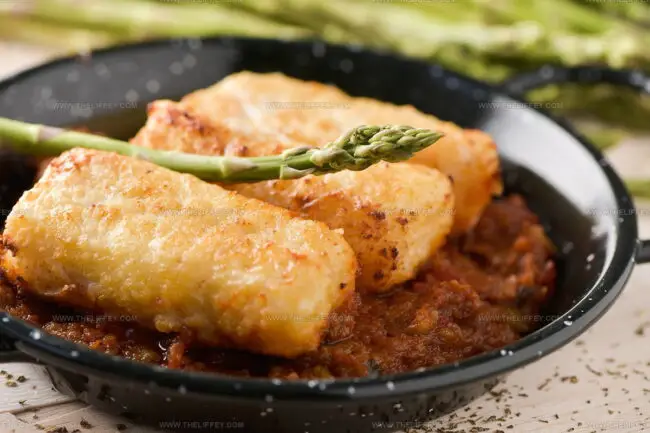
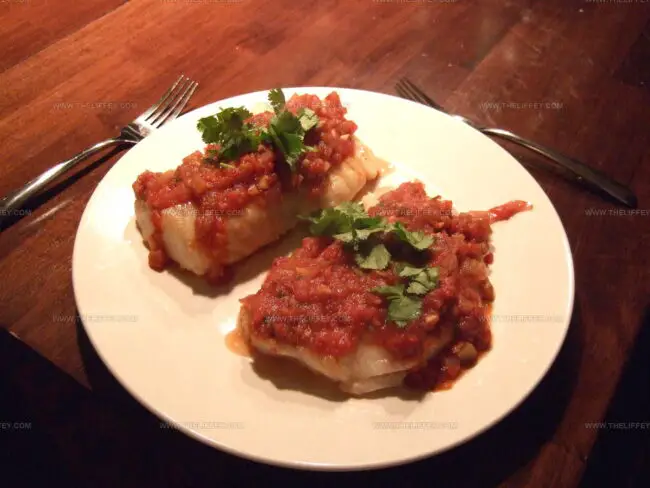
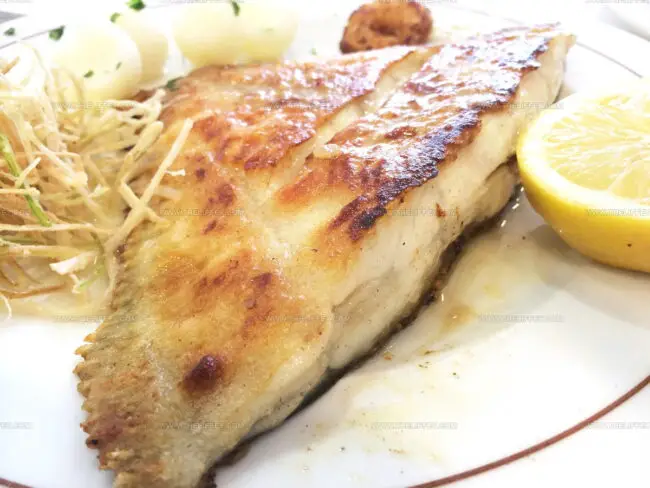
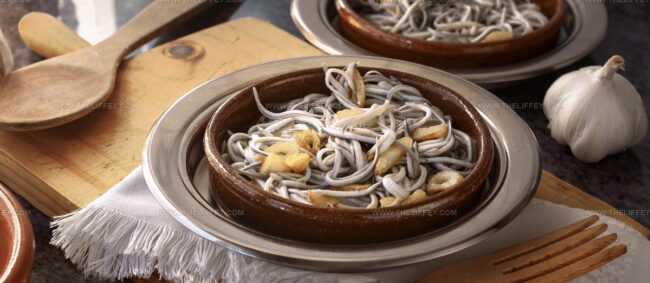
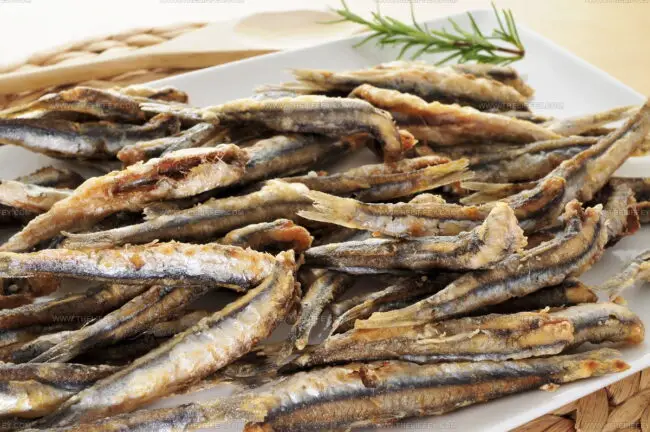
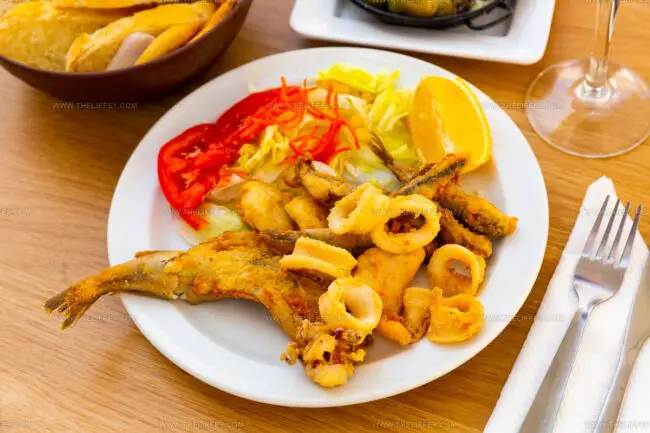
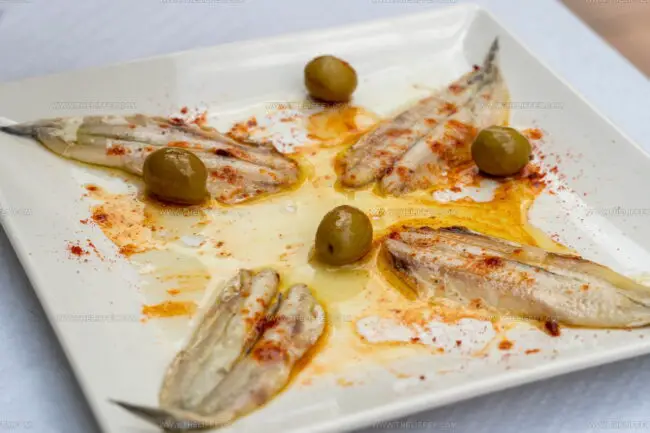
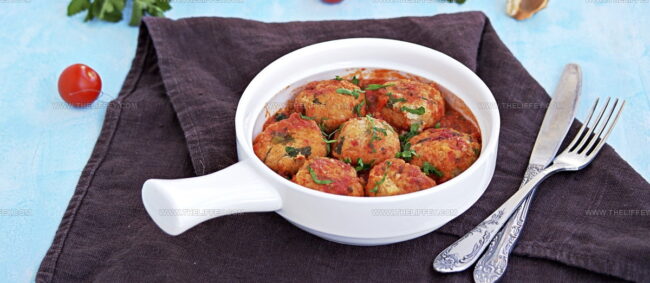
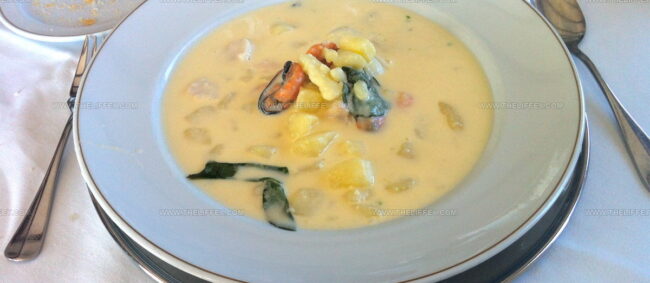

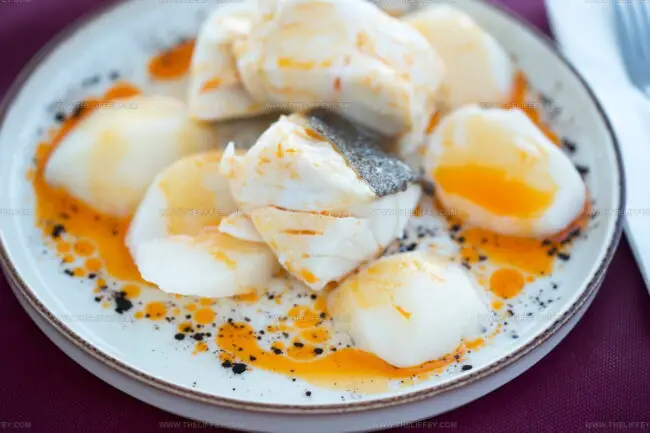
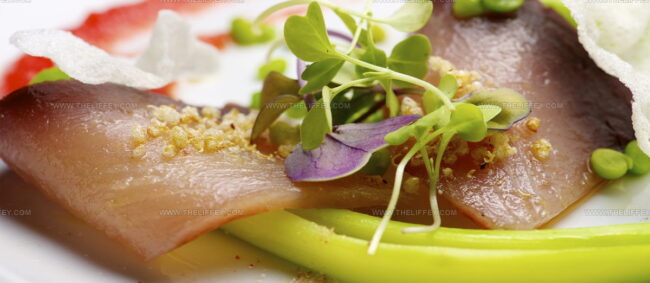
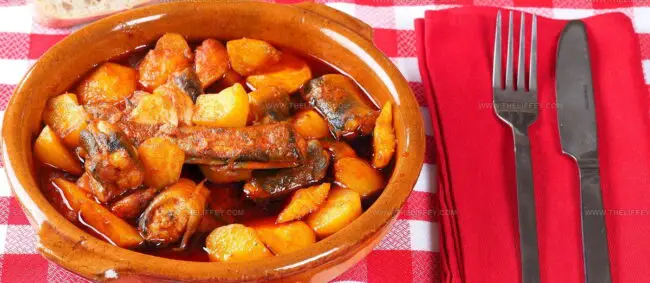
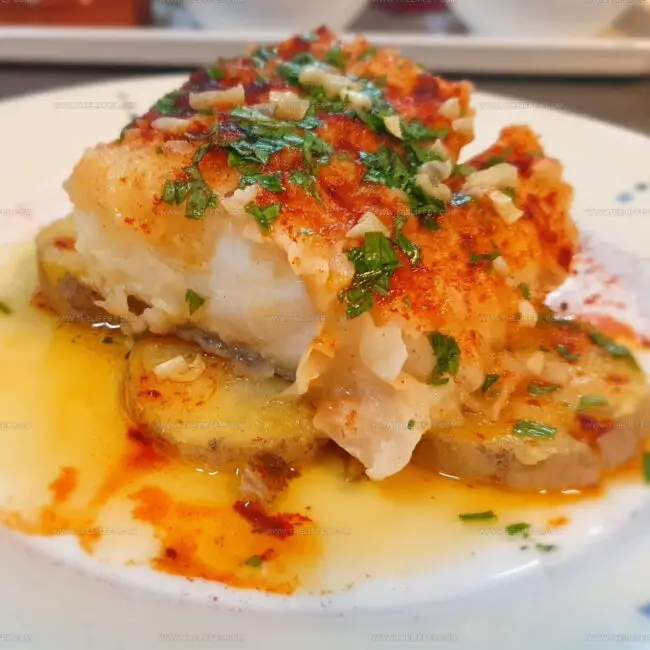
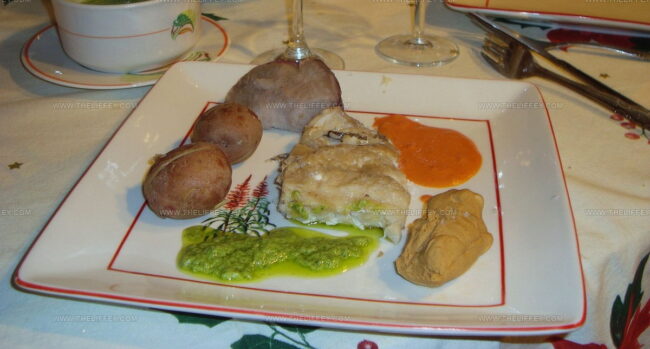
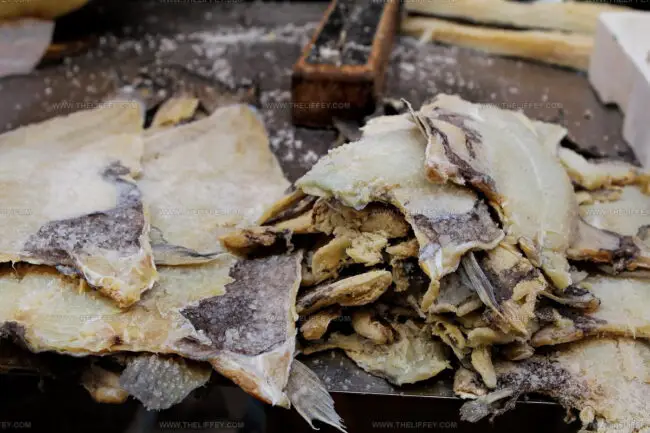
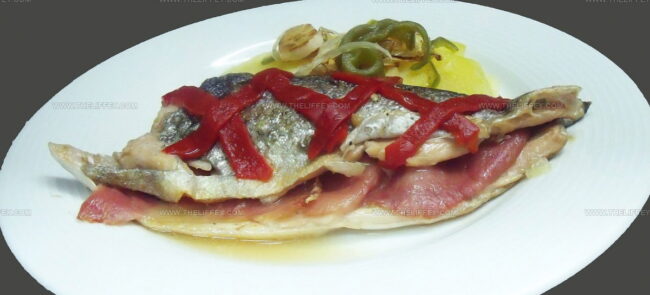
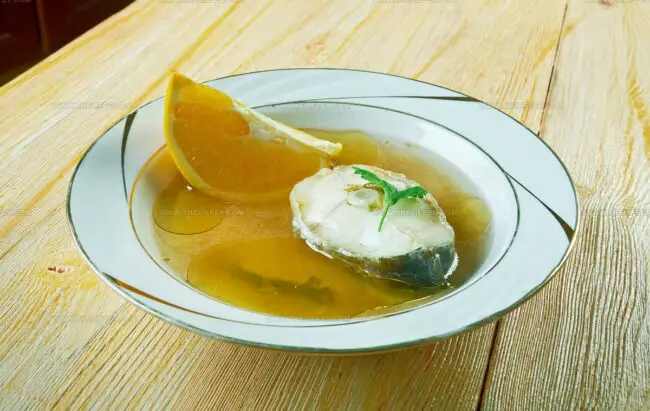
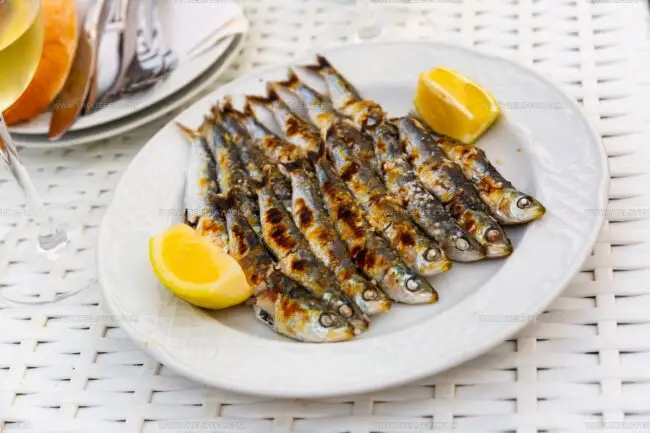
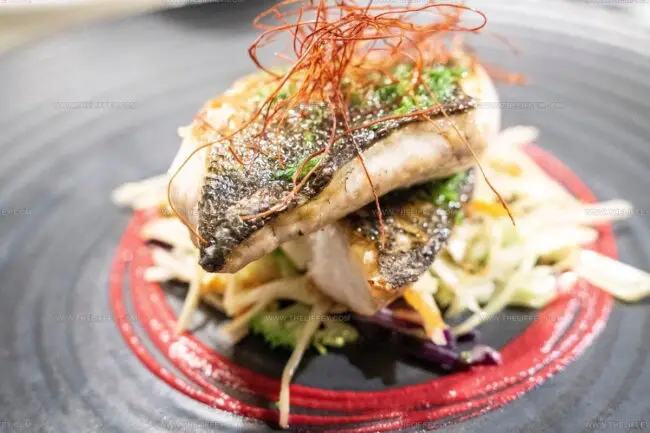
Amanda Bennett
Recipe Curator & Culinary Educator
Expertise
Baking and Pastry Arts, Recipe Testing and Development, Culinary Instruction, Food Styling and Photography
Education
Asheville-Buncombe Technical Community College, Asheville, NC
Diploma in Culinary Arts
Emphasized practical cooking skills, nutrition, and kitchen management.
Cambridge School of Culinary Arts, Cambridge, MA
Certificate in Professional Pastry Arts
Specialized in baking techniques, dessert presentation, and flavor profiling
Amanda’s roots run deep in the Southern hills, where every meal started fresh from the garden and every dessert came with a story. She trained at Asheville-Buncombe Technical Community College and sharpened her pastry skills at the Cambridge School of Culinary Arts, blending classic technique with everyday charm.
At The Liffey, Amanda’s passion is making baking and home cooking feel natural and joyful. She’s all about single recipes that are simple enough for a busy afternoon, but special enough to make someone’s day a little sweeter.